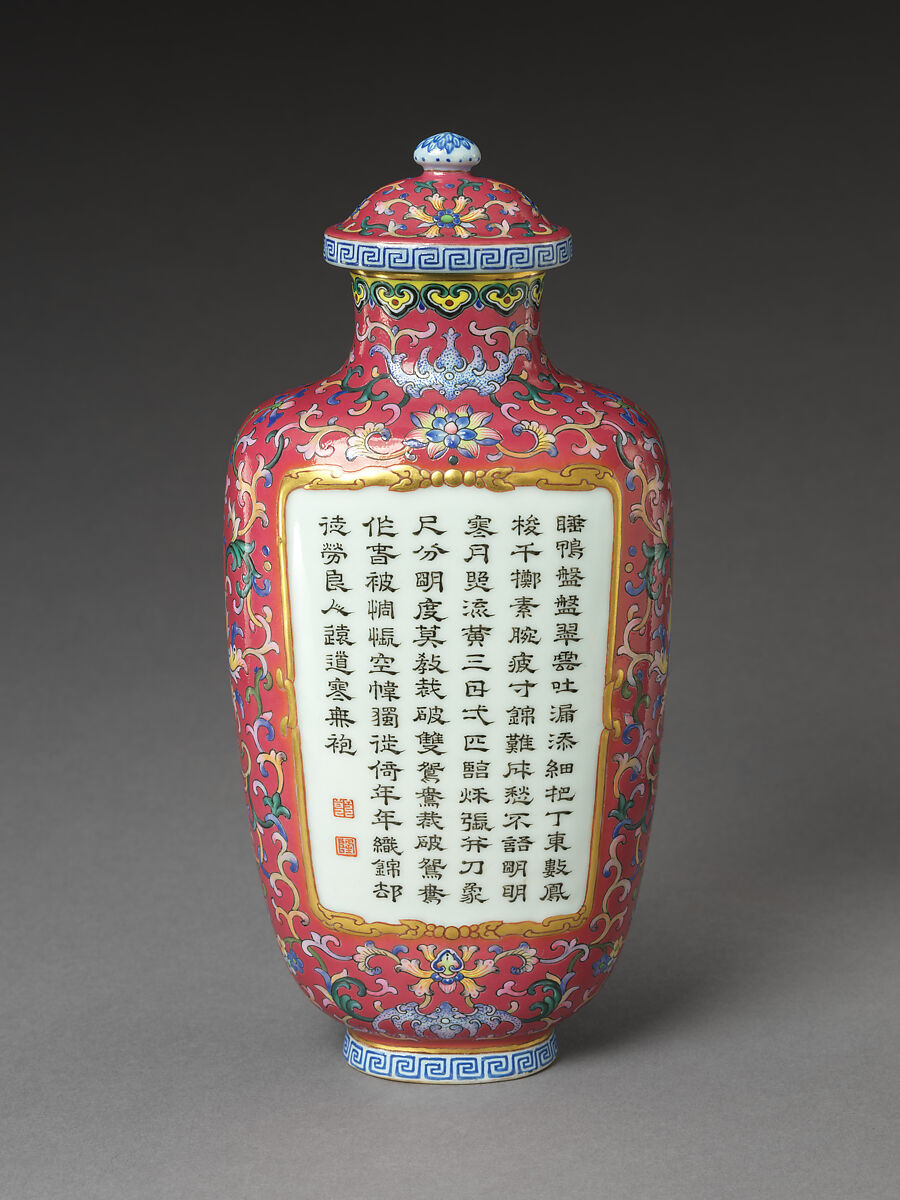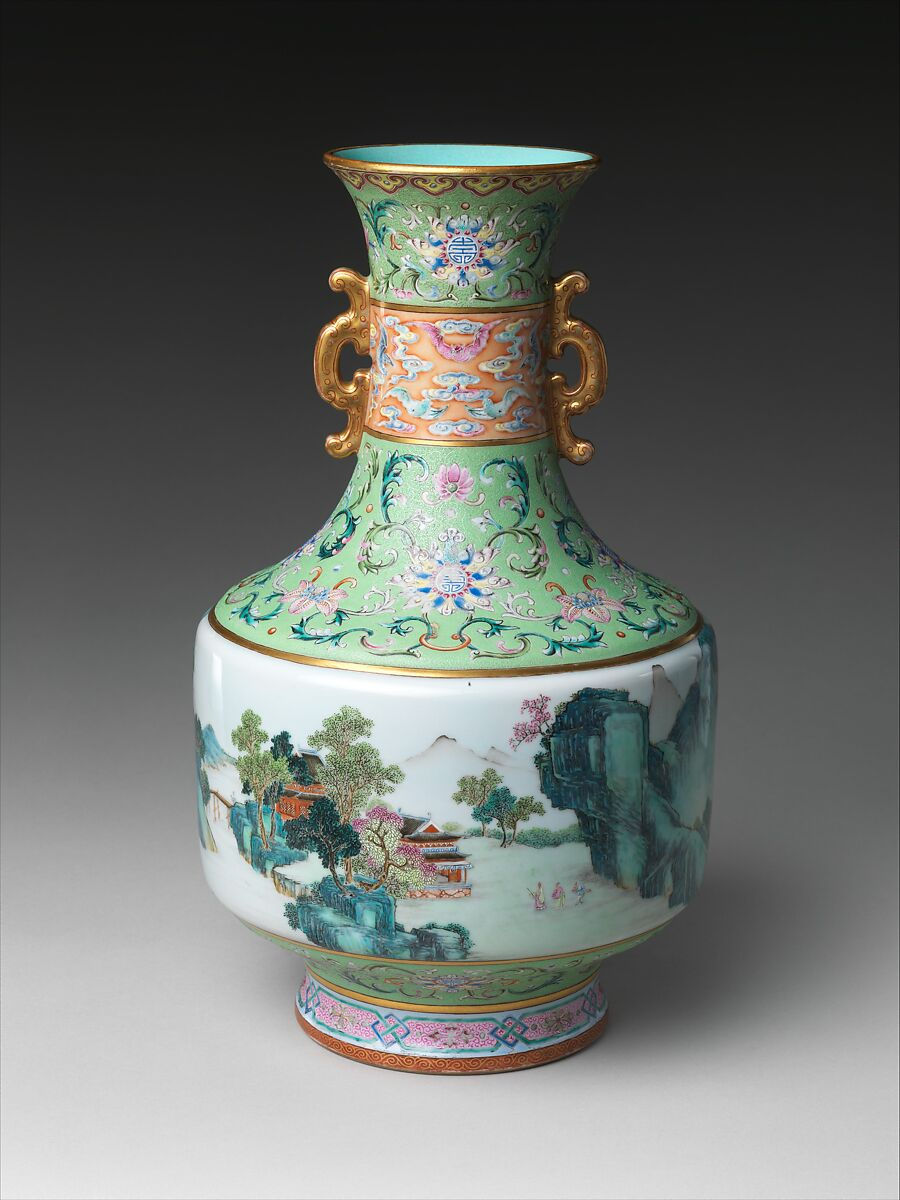The Brilliance of Imperial Vases under the Qing: A Peak of Chinese Porcelain
- Cabinet Gauchet Art Asiatique

- Jun 13
- 3 min read
There is no porcelain more sophisticated, nor more spiritually invested, than that produced during the Qing dynasty. As a historian of Asian art, I am always struck by the grace and rigor of these objects. Behind each Qing imperial vase lies not only the aesthetic refinement of an empire at its height, but also a worldview shaped by power, religion, and a profound literate culture.

The Qing dynasty, established by the Manchus in 1644, successfully integrated the artistic codes inherited from the Ming while developing its own stylistic grammar. From the beginning of the reign of Emperor Kangxi (1662-1722), the imperial kilns of Jingdezhen were put back into operation under strict control. The workshop became an artistic laboratory where technical skill, inventiveness, and symbolism interacted. Kangxi produced pieces of exceptional quality, with refined enamels, often intended for the palaces of the Forbidden City or offered as diplomatic gifts.
But it was especially during the reigns of his successors, Yongzheng (1723-1735) and Qianlong (1736-1795), that imperial porcelain reached its peak. Yongzheng, a demanding emperor and aesthete, supported a production of great finesse. Far from spectacular effects, he favored the elegance of forms, the subtlety of floral or calligraphic motifs, and chromatic harmonies often inspired by the paintings of scholars. It was a time when vases were no longer simple decorative objects: they embodied a literate and metaphysical vision of the world, an echo of the Confucian virtues of moderation, accuracy, and silence.

Qianlong, for his part, gave porcelain an unprecedented scope. Passionate about poetry, painting, and Chinese antiquities, he commissioned gigantic works from the imperial workshops. The aesthetic became more monumental, sometimes baroque, but always imbued with a deep respect for tradition. The emperor did not hesitate to blend archaic references with new techniques. It was also during his reign that Western influences, particularly in the rendering of perspective and the use of certain enamels, were integrated into the Chinese visual language without ever betraying its spirit.
What particularly strikes me about these objects is their ability to express a form of visual diplomacy. Each vase is a fragment of empire, a distillation of cosmic order and imperial ideology. Floral, animal, or mythological decorations are never decorative in the Western sense of the term. They are language. The lotus, the bat, the fish, or the dragons speak of peace, happiness, fertility, or celestial power. These objects, often produced in pairs or in series, punctuated palatial spaces, accompanied rites, and embodied the Confucian harmony between heaven, man, and nature.
The study of the reign marks painted or incised under the bases of the vases provides us with valuable keys to understanding their dating and purpose. But these marks are sometimes apocryphal, reworked later to flatter the tastes of the elite, or to restore legitimacy to highly inspired pieces. The art market has long been fascinated—rightly so—by the beauty of these works, but a purely commercial interpretation sometimes overlooks their political and religious depth. These are objects that embody the very body of the empire, its staging, its perpetuation.

We believe it is essential to restore to each imperial vase the context and value of its creation.
Bibliographic references:
Jean-Paul Desroches, The Forbidden City: Public and Private Life of the Emperors of China , RMN, 1994.
Marie-Noëlle Gensburger, Qing China: The Last Empire , Presses Universitaires de France, 2015.
Michel Beurdeley, Chinese Porcelain , Book Office, 1974.
Pierre Cambon (dir.), Treasures of Imperial China: Collections of the Guimet Museum , Paris Musées, 2007.
Christophe Comentale, Chinese ceramics: collections of the Cernuschi museum , Paris Museums, 2006.



Comments